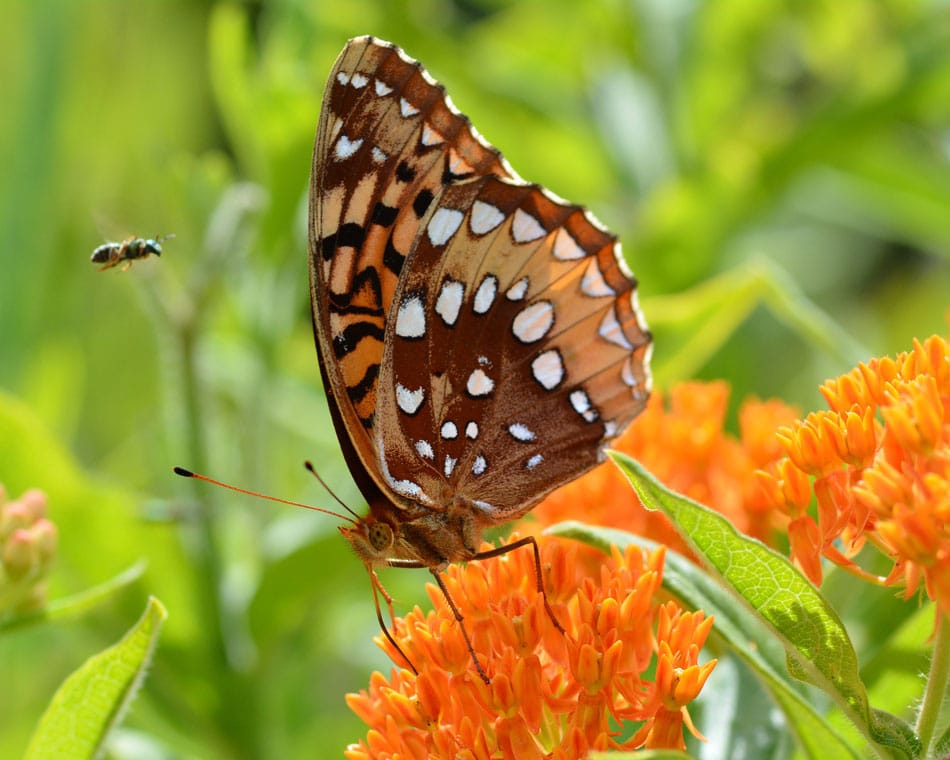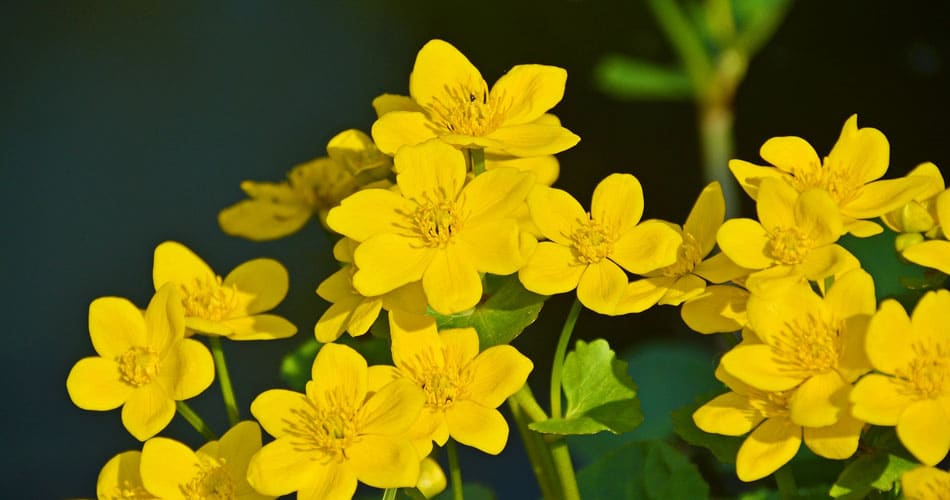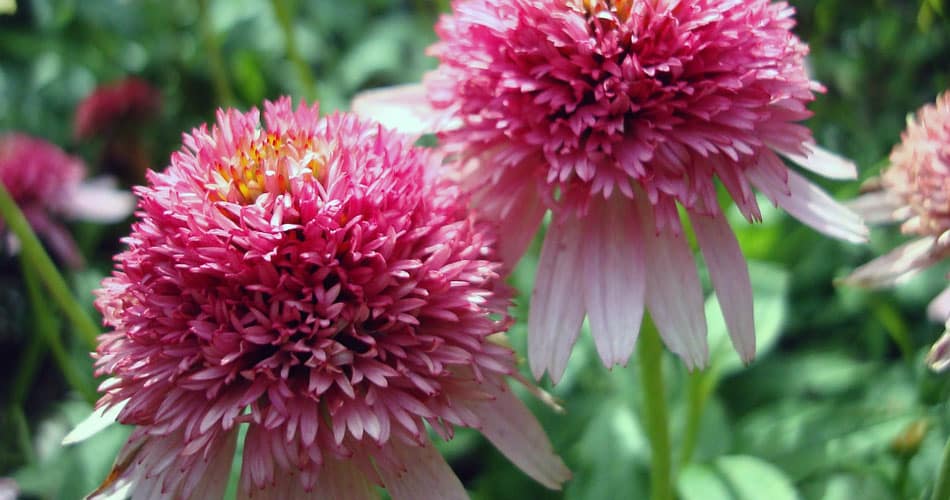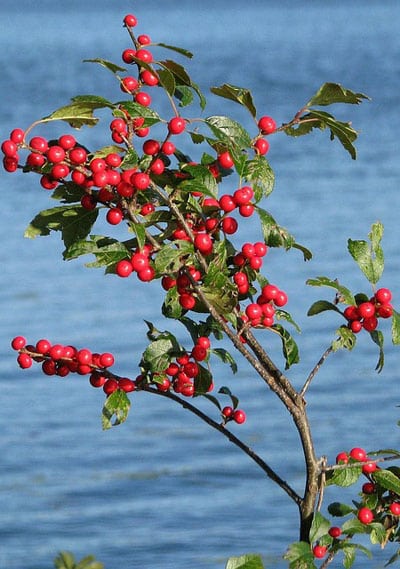Why choose native plants for your garden? Ask the bees! And the birds, and the butterflies!
What Are Native Plants?
Native plants are generally defined as the grasses, flowers, shrubs, and trees that were growing when European settlers arrived on the shores of North America. Native plants have been here a long, long time and have strong connections to their environment.
Contrary to popular belief, “native plants” doesn’t mean “ugly and weedy”! Many native species of trees, shrubs, and other plants are beautiful, with colorful flowers or bright berries. It’s simply a matter of choosing the ones that will look best on your property.
Reasons to Add Native Plants to Your Yard
There are many reasons to consider native plants for your property, from a desire to create a more ecologically sustainable landscape to wanting something more low-maintenance. Here are a few other good reasons to ‘go native’.
Native Plants Belong
Although we can easily install and enjoy the beauty of garden plants from different regions around the world, we should always remember how valuable native plants are.
Native plants have evolved along with the land they grow on and are uniquely suited for their setting. Over time, they have adapted to the soils, water, temperatures, and weather patterns of their native range, and their invaluable companions, their pollinators, have evolved alongside them.

Asclepias tuberosa with pollinators
The key relationship for a plant is with its pollinators. Leaves and flowers emerge when pollinators are active to ensure the trade-off of fertilization for food sources that keep both populations healthy. Native flowers attract native, and beneficial, insects. A successful plant’s summer fruit or winter berries may also be eaten by wildlife which help disperse a plant’s seeds and increase its range, usually in a neat package of fertilizer.
Native Plants are Resilient
Pests and diseases are everywhere, and no plant is immune to their damage. Plants, however, are better able to endure damage when they grow in native conditions that help keep them healthy and vigorous.
The right soil nutrients, water, temperature, and sunlight ensure strong growth, which is the main defense plants have against insect and disease threats.
Anyone who’s ever tried to grow a shrub or tree in a setting that is less than ideal knows how much effort is required to keep it healthy. Poorly-sited plants often need:
- increased irrigation
- excessive pruning
- frequent use of pesticides and fertilizers
These steps are needed when a plant’s requirements are not met, or when other conditions overwhelm a plant’s natural defenses. And these steps call for more energy and resources than is necessary or advised. Relying on traditional (synthetic) insecticides, in particular, is not sustainable.

Yellow marsh marigolds in New Jersey
Native Plants Look Right
The availability of plants from other regions increases our choices for what to plant, but it also means we risk having gardens that look like everyone else’s. Plus, our gardens will contain plant selections that don’t match the “feel” of native trees and shrubs.
Plants from a common location have developed characteristics that reflect it, whether it’s thick leaves to resist insects, bark that reflects heat, drought tolerance, or flower shapes that attract specific native pollinators. You’ll also find that native plants look good together, where their similar characteristics are harmonious.
Native vs “Nativar”
Many native plant species have been selected or cross-bred for particular or enhanced characteristics that make them more desirable in residential landscapes (and, therefore, make them more likely to be sold in local garden centers). This means that:
- A single plant showed different or unique characteristics and a plant breeder made more from cuttings and gave it a name
- Pollen from a particular plant was used to fertilize another, resulting in a new offspring, or version of the plant with desirable characteristics
An example is the native red chokeberry, Aronia arbutifolia. This rose-family plant is beautiful on its own, with clusters of white flowers that ripen into bright winter berries, and smooth green leaves that turn red in fall. Its cultivar, ‘Brilliantissima,’ is noted for having larger, more abundant, shiny red fruit, a more compact mature size, and more brilliant red fall color—all traits that are desirable in your garden.

Pink Double Delight flowers are an example of a nativar. It’s difficult for pollinators to gather pollen and nectar, and they are unable to produce seeds for birds to eat.
However, these cultivars of native plants – often called “nativars” – aren’t always as beneficial for wildlife as the straight species. Many have features like double flowers that look stunning, yet make it impossible for bees and other pollinators to access the nectar or pollen. Others have changes in leaf color that make them less appealing to caterpillars.
On the other hand, nativars bred for increased disease resistance, larger fruit, or more compact growth may be helpful for local wildlife.
Before choosing a nativar, be sure you understand how any differences from the native species will affect pollinators and other wildlife.
For more information on the pros and cons of nativars, visit the National Wildlife Federation’s website.
What to Know Before Planting Natives
If you’re interested in adding native plants to your garden, you don’t have to dig up your plants and start from scratch. But you will want to do a bit of sleuthing first. You’ll need to know the following details about your property (or about the specific location where you want to grow native plants):
- Your soil type and its drainage rate
- Garden orientation or hours of sunlight
- Water availability (through irrigation or natural rainfall), or your willingness to water new plants by hand
Once you can describe your garden’s characteristics, you can match it to native plants that thrive in similar settings and make a plan for adding those locally-indigenous species to your yard.

Native winterberry grows well in a variety of areas throughout New Jersey and eastern Pennsylvania
Where to Start With Native Plants
Here are two easy ways to start using more native plants in your yard –
- Replace struggling shrubs or trees with native species. You may find the perfect plant for that problem area that is too wet, or too dry, or too shady! For example, winterberry (Ilex verticillata) will grow in moist to wet acidic soil in part shade, and after its leaves drop, you’ll have branches covered with red berries that birds flock to.
- Add native flowers in your planting beds. You can dig out and relocate some of your flowering perennials and replace them with a native species. For example, a mass of orange butterfly weed, Asclepias tuberosa, will bring all the butterflies to your yard, so plant them where you can watch the show!
From the tiny meadow violet (the state flower) to the mighty red oak (state tree), there’s a wide range of native plants available to you and your garden.
NOTE: New Jersey’s Native Plant Society website has lots more information about native plants.
Help! Too Many Choices!
If you don’t know where to start, we can help! From soil testing to shrub care to organic pest treatments, our professional experts will help you make your garden a year-round, sustainable, and healthy addition to our native landscape.
GET THE LATEST NEWS
Subscribe to the Organic Plant Care Newsletter and get timely and helpful tips and updates monthly.
There's no spam - we promise!





